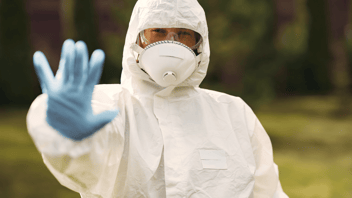Cold stress can pose serious health risks to employees, making it crucial for safety directors to recognize and mitigate symptoms promptly. For more information, explore our guide on Working In The Cold.
Understanding Cold Stress: What Every Safety Director Should Know
Cold stress occurs when the body is unable to maintain a normal temperature due to exposure to cold environments. This can lead to serious health issues such as hypothermia, frostbite, and trench foot. As a safety director, understanding the fundamentals of cold stress is essential to safeguarding your team.
Cold stress is not limited to extremely low temperatures; it can occur in moderately cold conditions if workers are wet or exposed to wind. Recognizing these factors is essential in creating comprehensive safety protocols. For more insights, visit our guide on Working In The Cold.
Common Symptoms of Cold Stress in Employees
Identifying the symptoms of cold stress early can prevent severe health outcomes. Common signs include shivering, fatigue, loss of coordination, and confusion. In severe cases, hypothermia can set in, marked by symptoms like blue skin, slow pulse, and loss of consciousness.
Frostbite symptoms include numbness, tingling, or stinging in extremities like fingers, toes, nose, and ears. Trench foot, caused by prolonged exposure to wet and cold conditions, manifests as red, swollen, and painful feet.
High-Risk Conditions That Increase Cold Stress
Certain conditions elevate the risk of cold stress. These include working in wet environments, exposure to strong winds, and prolonged periods in cold weather without adequate breaks. Additionally, workers who are not adequately dressed for the conditions are at higher risk.
Other high-risk factors include working at high altitudes, handling cold objects, and engaging in strenuous activities that lead to sweating, which can increase the risk of hypothermia. For more details, explore our resource on Working In The Cold.
Preventative Measures to Combat Cold Stress
Preventing cold stress begins with proper planning and preparation. Ensure that employees are dressed in layers, including moisture-wicking undergarments and windproof outer layers. Providing heated shelters for breaks and warm beverages can also help maintain body temperature.
Encourage employees to stay dry and change out of wet clothing immediately. Implementing a buddy system where workers monitor each other for signs of cold stress can be highly effective.
Effective Response Strategies for Cold Stress Incidents
In the event of a cold stress incident, immediate action is crucial. Move the affected employee to a warm, dry area and replace wet clothing with dry, warm garments. For hypothermia, gradual rewarming is recommended, starting with the core body temperature.
For frostbite, immerse the affected area in warm (not hot) water and avoid direct heat sources. Seek medical attention for any severe symptoms immediately. Having an emergency plan in place and training employees to act quickly can save lives.
Training and Educating Employees on Cold Stress Awareness
Effective training programs are essential for cold stress awareness. Educate employees about the symptoms, risks, and preventative measures of cold stress. Regular training sessions can keep this knowledge fresh and top-of-mind.
Utilize visual aids, hands-on training, and real-life scenarios to make the training engaging. Ensure all employees understand the importance of reporting symptoms and looking out for their coworkers.
Monitoring and Assessing Cold Stress in the Workplace
Continuous monitoring of weather conditions and workplace environments, coupled with comprehensive cold weather training, is key to preventing cold stress. Use tools like weather apps, thermometers, and wind chill charts to assess the risk levels daily, and ensure employees are trained to interpret and respond to these indicators effectively.
Regularly check on employees who are working in high-risk conditions. Implementing a system for reporting and responding to cold stress symptoms can enhance workplace safety and ensure timely interventions.



.webp?width=352&name=blog%20image%20(1).webp)


Leave a Comment